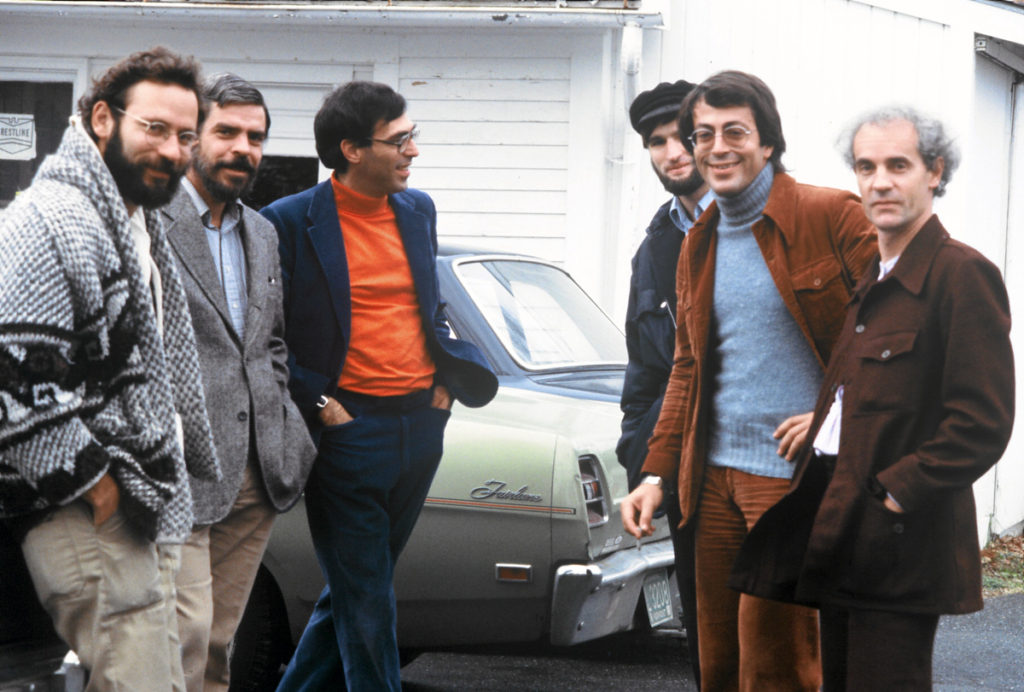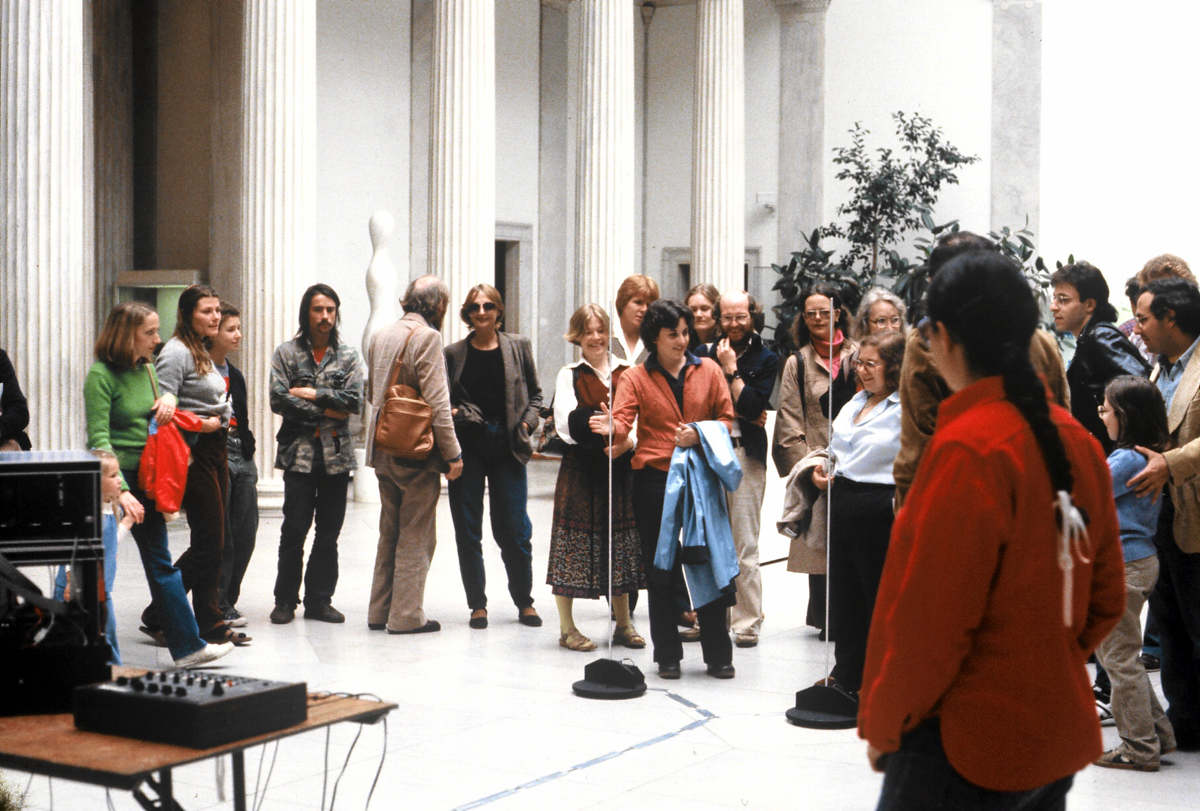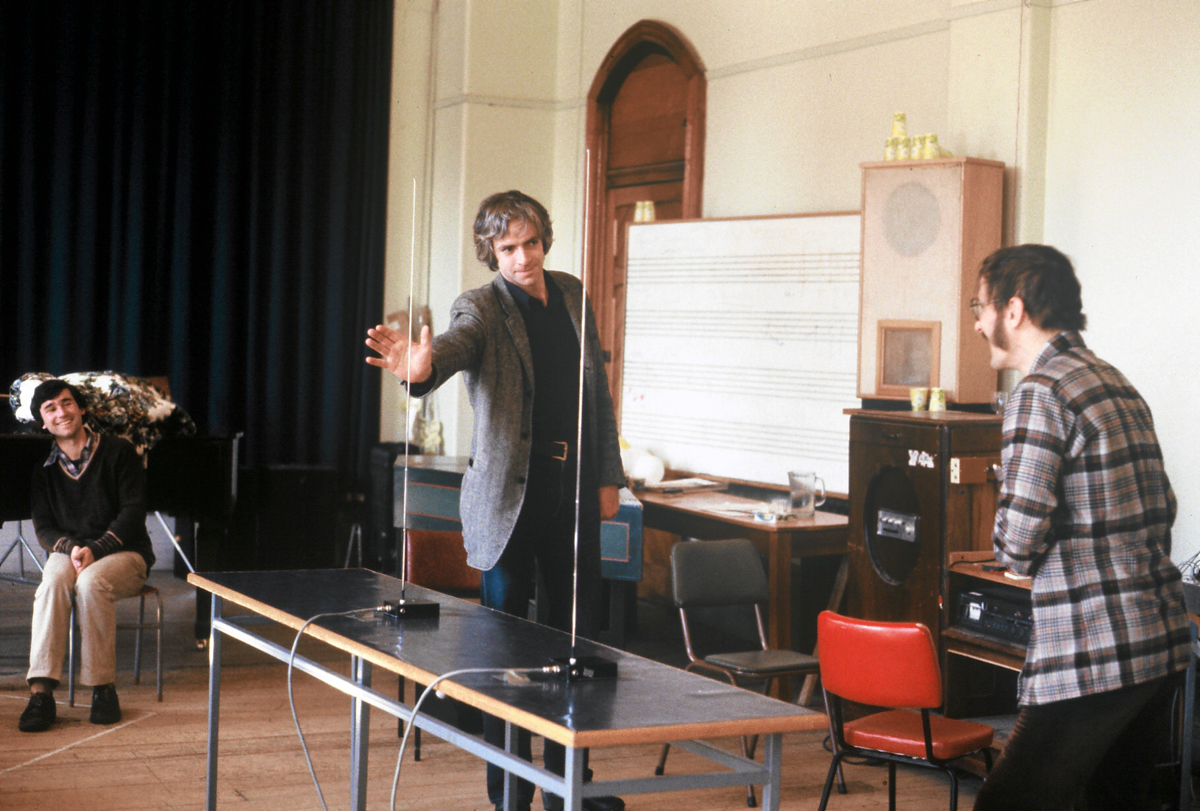Solo

Solo
By the middle of the 1970s, various digital devices were used for the first times in music, and I became interested in digital synthesizers. Thanks to a grant from the Rockefeller Foundation, in early fall 1977 I drove to Norwich, Vermont, to visit New England Digital Corporation. Roger Meyers, Jean-François Allouis, and François Bayle came with me. As a result of that visit, I ordered a Synclavier.

Left to right: Roger Meyers, Sydney Alonzo (hardware design), Jon Appleton (composer), Cameron Jones (software), Jean-François Allouis (GRM, Paris), François Bayle (GRM, Paris).

Left to right: Jon Appleton, Roger Meyers (background), Sydney Alonso. This resembles the basic Synclavier at the time.
When I returned to New England Digital in November 1977, I left with the model of a Synclavier that I had purchased with my specifications such as an analog/digital converter, programmable clock, and an ability to write software programs. Roger Meyers, my partner in developing software at the time, created a software structure that allowed me to control the scheduling of musical events. I had purchased the first digital synthesizer.

I also asked Robert Moog to build two antennae, as modified theremins, to control the Synclavier as a conductor. Moog’s antennae were more than five feet tall and a half-inch in diameter. After using them in initial concerts and demonstrations, I changed to Volkswagen car antennae, which could be collapsed to fit into a suitcase for travel and placed on small tables for performing.
I composed Solo in 1978. In this context, composing meant writing software to create the nature of the sounds and how they moved in time. For Solo, I created a silent voice based on a clarinet improvisation by J. D. Parran that I had heard in New York. I then composed an emulation of eight sounds: two clarinets, two flutes, and four vibraphones that scurried around and about the central silent voice. When I moved my hand towards or away from the right antenna, the sounds moved faster or more slowly. When I moved my hand towards the left antenna, I selected different groups of the eight sounds.
It was an improvising orchestra. It was the software that decided what the next notes would be. And I would be reacting to the sounds as they occurred. I was interacting with the sounds.
•
The first performance took place on August 30, 1978, at the UNESCO Summer Workshop in Computer Music, Aarhus, Denmark.
The performance as shown above took place at The Kitchen in New York in 1979.
In 1981, I gave a keynote address at the International Music and Technology Conference in Melbourne, Australia, at which time I coined the term interactive composing.
•
Playthings, a public-interactive computer/synthesizer installation, was first presented on May 27, 1978, at the Grand Opening Weekend of the New York State Performing Arts Center, Nelson E. Rockefeller Empire State Mall. It was often presented in the context of a lecture, concert, celebration, or art show.

Grand Opening Weekend of the Performing Arts Center Albany NY

Hartford CT Mall

Wellington NZ Composers Ross Harris & Jack Body
•
For other compositions, click on a title
Blues Mix 1966
Albany Music 3 1966
Jack in January 1967
Street Scene 1967
Drift 1970
Ideas of Movement at Bolton Landing 1971
Echoes 1972
From The 14th On 1973
Flowers 1975
Settings for Spirituals 1977
Solo 1978
Scenes from Stevens 1979
Follow Me Softly 1984
After Some Songs 1995
Spring Drum with Pierre’s Words 1997
Many Times … 2001
One World 1 2006
Micro Fictions 2009
Different Cities 2013
